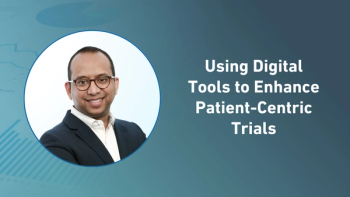
- Applied Clinical Trials-02-01-2015
- Volume 24
- Issue 2
Pressure Mounts for Central IRBs
The "discussion draft" for legislation to speed "21st Century Cures" to patients emerged very quietly on Capitol Hill recently, muted by an absence of bipartisan support which had generated considerable enthusiasm for this effort to promote biomedical research and streamline regulation.
Efforts are escalating to encourage sponsors, research institutions, and clinical investigators to accept oversight for multi-center studies by central institutional review boards (IRBs), as seen in several discussions of this topic at the December conference on "Advancing Ethical Research" sponsored by Public Responsibility in Medicine & Research. The debate was heightened by the recent publication by the National Institutes of Health (NIH) of a draft policy promoting the use of central IRBs to make clinical trials more efficient. While regulatory officials, sponsors, and investigators acknowledged that oversight by multiple IRBs often is redundant, costly, and time-consuming, there remains reluctance by local sites and research organizations to hand the reins to others.
The proposed NIH guide "On the Use of a Single Institutional Review Board for Multi-Site Research," issued late last year, encourages participants in multi-site NIH-funded studies to use a single IRB of record. "Working through IRB review at each site can add delay without increasing the protections for research participants," NIH stated, noting that the National Cancer Institute (NCI) has had a central IRB in place since 1999, and other NIH Institutes have followed suit. NCI continues to encourage (but not require) investigators to utilize its CIRB review to reduce the administrative burden on local IRBs and investigators and to provide high-level protection for study participants. The new NIH policy acknowledges that foreign sites may not agree to central oversight, and that some exceptions may be appropriate.
Similarly, NIH's Clinical and Translational Science Awards (CTSA) program, which supports a large network of research sites across the country, is promoting the use of central IRBs for the review of multi-site research as part of its program to spur development of biomedical discoveries into new therapies. Patients are frustrated by the slow pace of clinical research and delays in trial start-up, noted Petra Kaufmann, director of the division of clinical innovation at NIH's National Center for Advancing Translational Sciences. She observed that the use of local IRBs at each site can delay study initiation.
Articles in this issue
over 10 years ago
AdTestalmost 11 years ago
Terrorist Attacks Have No Impact on EuroMeeting, Says DIAalmost 11 years ago
Properly Assessing Quality in Clinical Trialsalmost 11 years ago
Exposing Patients to the Bigger Mobile and Digital Health Picturealmost 11 years ago
Key Strategies in Sustaining the Investigator Poolalmost 11 years ago
The Remote Patient-Centered Approach in Clinical Researchalmost 11 years ago
Risking it All? Going All in on RBM Adoptionalmost 11 years ago
Closing in on Opportunities to Simplify Protocol Designalmost 11 years ago
Integrated Clinical Research Systems: A Chance to Reinventalmost 11 years ago
House 'Cures' Proposal Faces Tough Road AheadNewsletter
Stay current in clinical research with Applied Clinical Trials, providing expert insights, regulatory updates, and practical strategies for successful clinical trial design and execution.





.png)



.png)



.png)
.png)
